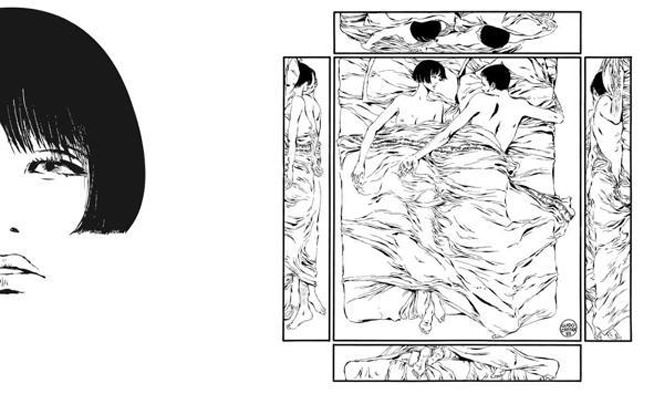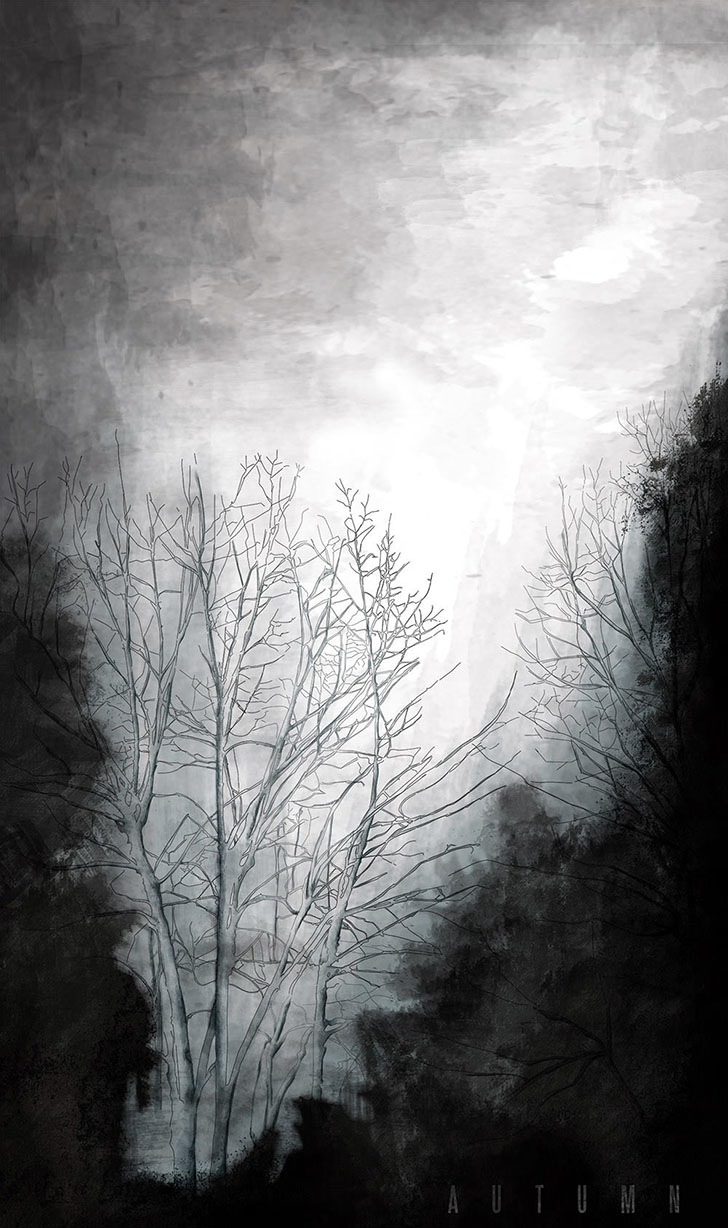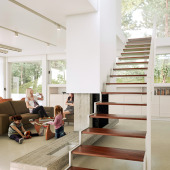Architectural Watercolors by Atelier Crilo
Atelier Crilo posted some architectural watercolor visuals recently that immediately captured my eye. I like this approach in general, and their use of AutoCAD layers in this case was specifically interesting. This is a traditional technique revisited with digital tools to produce architectural illustrations that have both the watercolor feel as well as some CAD drawing too. Enjoy this one!
Author :Atelier Crilo
Atelier Crilo is an interdisciplinary studio focused on architecture, co-founded and directed by Cristian Farinella and Lorena Greco. They develop unique solutions to design issues and provide with the same accuracy and precision a large range of services for design development and 3D Visualization
Intro
We have been following Ronen’s blog for a long time now, and we admire the predominant quality achieved via 3D in the many posts published, even the ones by beginners. Just a few years ago it was a completely different story. There were very few that showcased really high level of competence, and today with accessible contents (of course without underestimate the considerable effort required) you can get really good results relying on tutorials and making-of on the web along with practice. This would not be possible without a place like this blog and we are very proud to offer our own contribution to it.
Why watercolors?
Because of the desire to experiment with new representation techniques, which comes from other areas such as art, graphic design, comics, trying to cross and combine other disciplines together with the architectural visualization. It’s like our story all the time – working as architects and designers, but even as graphic designers and illustrators. It’s really helpful finding inspirations elsewhere.
In this way we rediscovered the watercolor where you least expect it, in the world of Italian comics that today seems to be in its rebirth.
If we look at both graphic novel and popular comics it is possible to find great writers and artists incomparable like Gipi (Gian Alfonso Pacinotti), but especially we are witnessing the rebirth of Dylan Dog with the new editorial line by Roberto Recchioni and with talented comic artists as Gigi Cavenago. Architecture and comics are disciplines closely related, and the two positions, comic artist and architect, may be complementary although technically they make drawings for very different goals.
Looking at the depth of the cartoon drawing as at the expressive use of line and color can be a source of deep inspiration, as well as technical knowledge to any 3D visualizer that is called to represent buildings, perspective views, like to tell through his own pictures some stories of unbuilt visions (as many have started writing).
Valentina by Crepax
In this visual there is a clear convergence with the architecture, orthogonal projections and top view (plan) for a scene mentioned countless times in comics. It is no coincidence that Guido Crepax was architect passed to the world of cartoon.
Drawings by Gigi Cavenago
In these two drawings, side by side, it is shown Dylan Dog with the forest as background (here the work in progress of the great cover) and the view of a narrow street in London made with a few bold strokes, based on strong use of color, without any outline to the contours. The choice of the camera as well as the forced perspective give lends a strong dynamic sense to the two scenes.
Watercolors by Gipi (Gian Alfonso Pacinotti)
Modus Operandi
Broadly speaking it’s important to understand the following general structure. Drawings were intended to be a single board, whose reading should be seen as a whole. A layout made by strips in horizontal format, using strong painted background of black (such as in the use of traditional ink in hand drawings) and using the watercolor with a wide range of tone. From dark colors with cold green and blue to the pure white that like in the classic technique is not obtained by using the white color, but from using the white of the paper.
Study model
The design choices are immediately and clearly visible on the materials, joining together the step of texturing to the modeling, as an element of control for the project.
Starting from the model
In our case both the architectural project and the 3D visualization are managed by us, the positions of designer and 3D visualizer in this case are the same, so we have developed a 3D model very detailed to better manage 2D drawings and sections. Generally, we design directly in 3D using from the beginning textures and materials, considering camera angles for the interiors design.
In this way we try to keep a total control of the project from the very beginning. Actually is hard especially in the early stages of design, but it has a great advantage in the rest of the workflow as you can imagine. For the modeling we use SketchUP, where it’s possible to obtain high level details and complexity, even though it’s a simple and immediate tool. At the same time from the point of view of an architectural designer it is unequaled when working with the real sections. Other applications do not provide this option so well.
To explain myself better, it’s not about viewing the section planes, but to work on them being able to edit profiles and polygons in the rest of the model. The house is heavily based on the section and this tool was a very useful one to manage the project with.
The Sections
The section tool allows not only to display the section plane, but to model inside.
Exporting
Once built the model and reached a sufficient level of detail, there are two export options :
- Export as AutoCAD DWG.
- Export as raster (PNG, JPG, TIFF) useful for shadows and hidden lines.
Both are valid methods for a drawing basis to work on afterwards, with some differences in the workflow. Let’s see the DWG export to AutoCAD which is what we usually use. You have to pay attention to the scale of the drawing by setting 1:1 in the case of technical drawings such as plans and elevations, regardless of the width and height in pixels, because our output will be a vector drawing. Then we select lines instead of poly lines, to not encounter after the export the lines with initial and final width different from zero.
After exporting and opening in the CAD you will have something like the image below, a good basis in wireframe with hidden front geometries.
Exporting to DWG
The export generates a good wireframe to be used as a basic drawing.
Forcing the hand
On the basic drawing in AutoCAD we can give depth to the contour lines, to the lines of shadow and in general carry our feeling from the hand drawing to the cold vectorial shape of the CAD software. Taking advantage of the common techniques of the drawing, we use hatches as dots and crosses to highlight windows, interior surfaces and shadows, working to emphasize some areas of the design. The purpose is to give an interpretation, so it’s a completely personal aspect of this workflow.
AutoCAD drawing
Use of the border lines thicker to highlight the profile of the house, or to highlight the skylight as in this case. Work to create imperfections and dirty typical of the hand drawing, which actually simulate the materials in the reality.
AutoCAD drawing
A series of hatches as the dot and cross highlight materials and dirtying on the floor
Black
Black is a color you must be able to use with courage. Draftsmen that use the black ink not only as a crosshatching of the section know that very well. To find the right amount of black to use, we created a background landscape from a reference photo. Basically we have traced a picture using AutoCAD and then we created a gradation of hatches (with scale parameter that becomes denser) until solid black.
Hatches
We have traced some landscape photos directly on AutoCAD with poly-line and then filled areas with hatches line, dot and solid black.
To sum up…
We ended up with a good basis for watercolor on Photoshop, made by an exported DWG, from hatches and lines in thickness to accentuate some areas of drawing, strong black hatches in the landscape and shadows on the ground obtained from a SketchUP export (we’ll see later how to do it). The result is the raw image that you see below.
Shortest way
If you are not very familiar with AutoCAD or you want to speed up your workflow and still get a good base on which to make watercolors quickly to see right away how it seems (useful in pre-visualization) you can export a combination of rasters from SketchUP and later using overlay function on Photoshop. In this way you bypass completely the previous DWG steps. Let us summarize the steps to follow :
- Export a basic drawing on transparent background.
- Export a wireframe.
- On Photoshop create a white sheet that simulates the paper.
- Overlap on the white sheet the two previous exportations.
1.
On SketchUP we find both the monochrome and shaded view, but in our case the best is hidden line mode. Enable this display mode from the menu View/Face Style/Hidden Line and go to File/Export/2D Graphic. Select save file as .PNG and open the Options dialog box to set the size of the file, 4000-5000 pixels are more than enough, check the option transparent background. Once this is done, you will have a file to open with Photoshop like this.
Hidden line
The exportation to file PNG with transparent background lets us see the background color of SketchUp (light blue in my case). Just make the picture monochrome later on Photoshop to delete it.
2.
Enable on SketchUP the wireframe visualization mode from the same menu of before View/Face Style/Wireframe and then go to File/Export/2D Graphic. Select save file as .PNG and open the Options dialog box. Use the same size as before and always leave the transparent background.
Wireframe
We can overlap the exported wireframe B above the level A with multiply effect and set the opacity to 20-30%
3.
On Photoshop we create a new sheet, not necessarily the white. There are many ways to do this, from the menu Filter/Noise/Add Noise or using a texture that simulates directly a sheet of paper (even aged paper).
Drawing with shadows and wireframe
We have obtained overlapping the levels A and B a complete drawing with shadow and a light wireframe that gives depth to the geometry. The white sheet in this case is made by a noise effect starting from a simple solid gray color.
Working with Brushes
On the drawing with the shadows we can finally paint with watercolor brushes. We can find all kinds of brushes on the web, such as here on BrushKing typing watercolor, or at this link or in this collection, or we could even create our own from scratch. However, the secret is not so much in a specific brush, but is to collect several different types, so is better to find a pattern with many brushes already made paying attention to modulate the transparency to avoid a stained effect. This is also the less technical part and definitely the more artistic aspect of the workflow, so I’ll leave the following short video to see how to do with brushes.
Complete drawing
Step by step, we completed the watercolor drawing. We find all the elements such as trees obtained with fill patterns, black shadows, the wireframe with a little transparency and the watercolor brush strokes.
Here are some watercolor works recently made using this techniques shown in the article 🙂



































amazing
Surasak Jitaied
I appreciate the artistic quality of the piece and I am familiar with and respect Atelier Crilo’s work. Very nice. Without regard to Atelier’s fine works and this tutorial, for which I am thankful, regarding the lede; I am a little perplexed how RB can call this endeavor ” watercolor “. It is a digital work of art, perhaps a digital watercolor, and about as close as you will ever be able to get to the real thing. But please do not take it for granted that this is what is now considered in the digital word, a watercolor, because it is not. I play in both the digital and analog mediums, and it pains me that the true beauty and strengths of real watercolor are being lost in places like this. Hybrid drawings are perhaps the ultimate, and perhaps I should post one or two, but in the mean time please know and make the distinction. There is nothing that will ever replace the real thing in terms of artistic quality, in spite of the quality of the digital watercolor “medium”, the brush or program. Regardless, that should not stop anyone from creating wonderful, unique, if not cost effective works like this. Well done Crilo.
I love the organic feel that watercolor adds. It can really add personality and warmth to an otherwise clinical rendering. Here’s another watercolor brush that you can paint with if you prefer to paint in a natural way rather than ‘stamp’ you texture on http://grutbrushes.com/free-realistic-photoshop-watercolor-brush/
BillCooper You are very much correct… These are digital and far from the real thing, though what you raise here is an issue of proper title – I’m pretty sure the difference between traditional watercolors and Crilo’s method shown here is obvious.
I would love to debate that part where you say “There is nothing that will ever replace the real thing in terms of artistic quality”
You never know 😉
Very inspiring! Thank you for this in-depth making of!
ronenbekerman BillCooper Absolutely agree!But
oncea traditional water colorist make a
minimum mistake , that mistake will be in that watercolor paper sheet forever, unless
he or she star over again …in that particular moment is when we realize the “true “ value or lets say better “the real value of digital
watercolor”… a couple of undoes and problem resolve .The architect can go to
the meeting presentation on time and with a smile in his or her face ,
meanwhile the traditional watercolor like me will be on the studio moonlightingto meet the deadline that it had been
postponed 😉 !